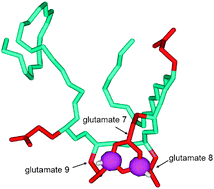Gastrins, iron and colorectal cancer
Abstract
This minireview explores the connections between circulating gastrins, iron status and colorectal cancer. The

* Corresponding authors
a
The University of Melbourne Department of Surgery, Austin Health, Studley Road, Heidelberg, Australia
E-mail:
grahamsb@unimelb.edu.au
Fax: +(613) 9458 1650
Tel: +(613) 9496 5592
This minireview explores the connections between circulating gastrins, iron status and colorectal cancer. The

 Please wait while we load your content...
Something went wrong. Try again?
Please wait while we load your content...
Something went wrong. Try again?
 Fetching data from CrossRef.
Fetching data from CrossRef.
This may take some time to load.
Loading related content
